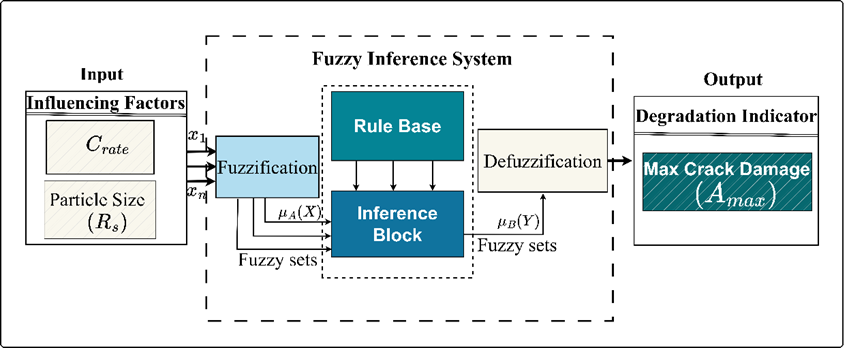Lithium-ion battery performance and longevity are critically impacted by mechanical degradation, such as particle cracking within the anode. This incipient fault gradually reduces capacity and increases safety risks. Our research tackles this challenge with a novel and computationally efficient fuzzy logic model that predicts maximum crack damage. Traditional physics-based models for crack propagation, while accurate, are computationally expensive and data-intensive. This limits their application for rapid design iteration or large-scale degradation studies. A simpler, yet intelligent, alternative was needed to bridge this gap.
Fuzzy logic is uniquely suited for modeling complex, nonlinear degradation processes. It handles the inherent uncertainty in system behavior and provides a transparent, interpretable framework based on intuitive ‘if-then’ rules. Unlike black-box AI models, fuzzy logic is easily understandable, allowing for actionable insights without sacrificing performance. A key contribution of our work is the systematic methodology used to optimize the granularity of the model’s membership functions. This process carefully balanced model complexity with predictive accuracy, ensuring that the fuzzy logic system robustly captures the underlying physics of crack-induced degradation without overfitting.
The significance of this research lies in the development of a predictive fault model for particle crack damage in lithium-ion batteries. This model provides a valuable tool for proactive design optimization and early-stage degradation assessment, helping to create more durable, safe, and efficient energy storage systems. By enhancing battery longevity in applications such as electric vehicles and renewable energy grids, it also serves as a key component for integration with digital twins, enabling smarter battery management.

